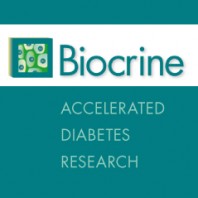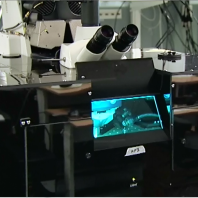Blood glucose levels are controlled by the autonomous nervous system. Parasympathetic axons directly influence islet function, leading to higher insulin release and lower levels of blood glucose. The results are published in December 2012 in PNAS. The autonomous nervous system responsible for the unconscious regulation consists of parasympathetic and sympathetic parts, managing the calm and …
Once a hormone is released it can stimulate its own production. This principle was previously proven by Professor Berggren’s group in relation to insulin. Now the same group shows the generality of the approach: glucagon secreting cells increase their production when they sense increasing levels of glucagon. The results are published in PNAS in December …
Biocrine’s CEO Professor PO Berggren was interviewed by NyTeknik, Swedish leading technology and IT newspaper. Treating diabetes with transplanted insulin-producing islets of Langerhans was the main subject of the discussion. Transplantation into the eye is a novel method developed by Prof Berggren’s research group. So far, the procedure has been thoroughly tested in mice leading …
The researchers in Professor Berggren’s group are in the forefront of resolving key challenges in understanding the molecular signalling in the islets of Langerhans, the endocrine pancreas. Specification of differences between human and mouse islet architecture and function as well as possibility to image molecular processes in the living organism will eventually lead to insights …
Inositides are involved in regulating the insulin release from the pancreatic beta cell. New findings are published in Advances in Biological Regulation in September 2012. Inositides take an active part in regulating many vital processes in all cells in the organism. Depending on its primary function, cells have a specific footprint of what inositides they …
www.biocrine.se is live Our company web site www.biocrine.com is now launched. We will be looking forward to your feedback on info@biocrine.se. With best regards, The Biocrine team
The unique innervation pattern of the human islets of Langerhans has been described in two articles in the Nature Medicine and Cell Metabolism. These results will have major implications for future development of novel drugs for the treatment of diabetes. Hormone release by the endocrine pancreas is regulated by the autonomic, non-voluntarily, nervous system, consisting …
On the 28th of October 2011, Biocrine was featured as one of the prominent life science companies on the 92nd annual meeting of IVA. In an interview for IVA, Biocrine’s CEO Per-Olof Berggren talked about the main focus of the research; understanding of how a healthy insulin producing beta cell works, …
A promising way to delay onset of type 1 diabetes is to reduce the concentration of apolipoprotein CIII (apoCIII) in blood. This discovery is presented in a newly published article in PNAS from June 2011. It took twice as long for the rats that have undergone therapy reducing apoCIII to develop …
New success of the InSight* technology is now presented in an article in PNAS from July 18th, 2011. Using this unique technology in a mouse model, reactions of the immune system to implanted islets of Langerhans were for the first time observed in a living organism. Following an allogeneic transplantation of beta …





